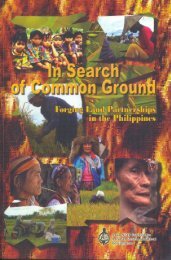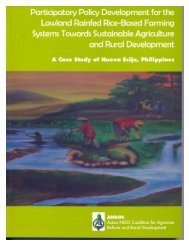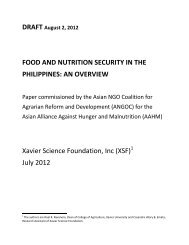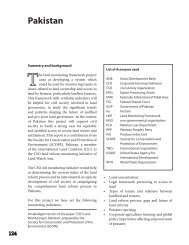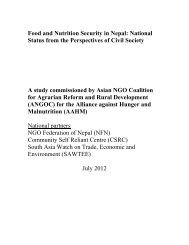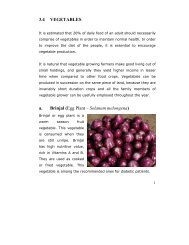Traditional Practices in Agriculture FULL - ANGOC Site
Traditional Practices in Agriculture FULL - ANGOC Site
Traditional Practices in Agriculture FULL - ANGOC Site
You also want an ePaper? Increase the reach of your titles
YUMPU automatically turns print PDFs into web optimized ePapers that Google loves.
3. The leaves fallen on the field will be mixed <strong>in</strong>to the soil which<br />
add organic matter to the soil. The roots also fix atmospheric<br />
nitrogen and thus improve soil fertility.<br />
4. Horse gram is stored <strong>in</strong> empty common salt bags – <strong>in</strong>sect<br />
damage is reduced – Salt prevents hatch<strong>in</strong>g of storage pests<br />
eggs and also acts as a preservative<br />
f. Cowpea (Vigna catjang)<br />
Cowpea is commonly used<br />
as a pulse crop. It matures<br />
<strong>in</strong> 75-90 days facilitat<strong>in</strong>g the<br />
farmers to use it <strong>in</strong> mixed<br />
cropp<strong>in</strong>g and multiple<br />
cropp<strong>in</strong>g. It is also used as a<br />
green manure crop. Cowpea<br />
when mixed with ground nut<br />
at 1 row after every 10 rows<br />
of groundnut will help as a<br />
catch crop for red hairy catterpillar of groundnut. It is a rich source<br />
of protiens. As a fodder it is highly palatable to all types of livestock<br />
and it can fed either green or made <strong>in</strong>to hay.<br />
*****<br />
8




